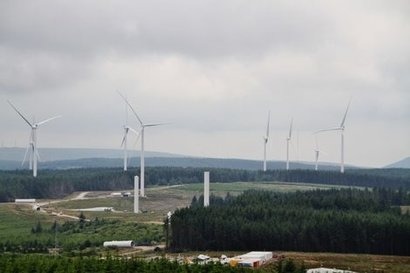
The export of power to the national grid from the wind farm is a major boost to delivery of Wales green energy targets. The Swedish energy company Vattenfall is now looking forward to the completion of the wind farm early next year.
The 228 MW Pen y Cymoedd project is not just Wales’ largest onshore wind farm it also bigger than any English project. It is also Vattenfall’s largest onshore wind farm.
“Wales’ big ambitions for renewables send a strong signal to the green energy sector” said Gunnar Groebler, Vattenfall’s Head of Business Area Wind. “Vattenfall’s Pen y Cymoedd Wind Energy Project will propel Wales towards reaching those objectives. Energy companies like Vattenfall must support the decarbonisation of the energy sector if the international community is to hit climate change targets. That is why we are building projects like Pen y Cymoedd and why we hope to continue to build our renewables business alongside a growing and competitive Welsh wind energy supply chain.”
Lesley Griffiths, Cabinet Secretary for Environment and Rural Affairs, Welsh Government, added that it’s great news that Wales’ largest onshore wind farm is now generating energy. Supporting the development of more renewable energy projects is a key priority for the Welsh Government and this marks progress towards its goal of reducing Welsh greenhouse emissions by at least 80 percent by 2050.
Mike Pitcher, Programme Executive for the Energy Delivery Programme at Natural Resources Wales said that the work to restore extensive areas of peatland habitat and the development of new mountain bike trails around the wind farm shows how it’s possible to generate multiple benefits for people, nature and the economy when delivering renewable energy projects.
The Welsh Government challenged the Welsh renewable electricity sector to generate 7,000 GWh by 2020. Pen y Cymoedd will deliver 11 percent of that target. It is expected to produce enough power annually to meet the electricity demand of more than 188,000 UK households and will more than meet the domestic demand of host local authorities Rhondda Cynon Taf and Neath Port Talbot. Over the lifetime of the project, it is expected to save 6.4 million tonnes of CO2.
For additional information:

